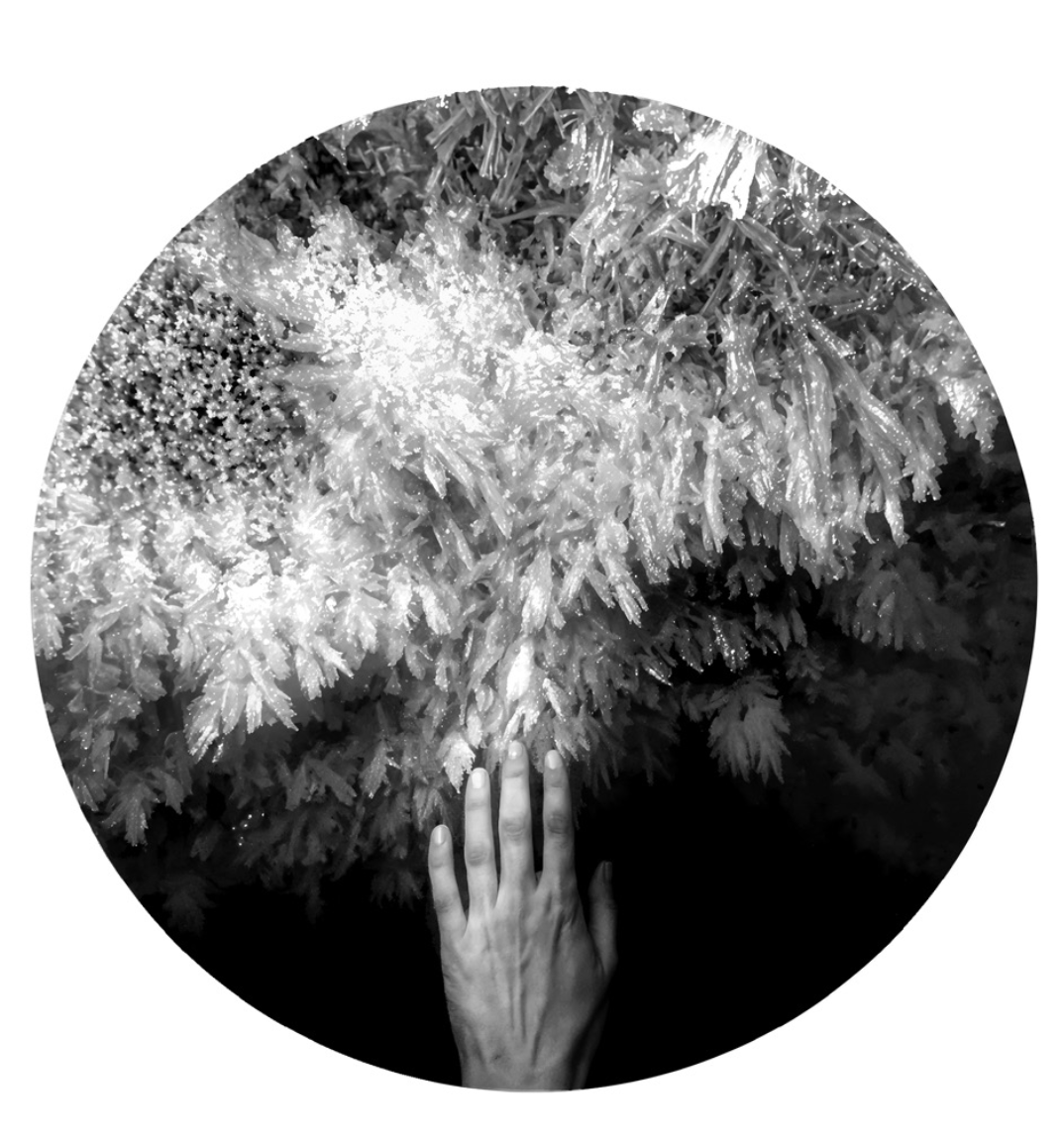
Everywhere we are now is the farthest place
By Franziska Hasenburg
Inspired by an encounter in Svalbard Church with Mary Edwards and her eponymous sound installation
Everywhere we are is the farthest place
Everywhere is the farthest place
on the surface of a sphere
isotropic and homogeneous,
a globe with poles of ice.
The land of ice
majestic, drastic, brute
Existing in silent grace.
Now is the farthest time
in our reference system,
wormlike lurching through the realm of possibilities.
In which so many worlds are disappearing
when ice melts, forests burn, corals bleach.
Yet, the sphere is orbiting in ponderous indifference.
Everywhere we are now is the farthest place
The farthest advance in human self-destruction
The farthest extermination of beings and worlds
by a species that is not ready for its reign.
that can create but not sustain,
that struggles with transforming
from its reference system.
The grace of the land of ice
cannot hide its vulnerability
the sound of the seasons distorted
and the known patterns dissolving
the ocean uncovered,
a realm is lost.
Überall ist der fernste Ort
Überall ist der fernste Ort
Auf der Oberfläche einer Kugel,
isotrop und homogen,
ein Globus mit Polen aus Eis.
Das Land aus Eis,
majestätisch, drastisch, brachial,
Existiert in stiller Anmut.
Jetzt ist die höchste Zeit
in unserem Bezugssystem,
das wurmförmig durch das Reich der Möglichkeiten strauchelt.
In dem so viele Welten verschwinden,
wenn das Eis schmilzt, Wälder brennen, Korallen bleichen.
Doch die Kugel kreist in bedächtiger Gleichgültigkeit.
Überall, wo wir jetzt sind, ist der weiteste Punkt,
der weiteste Fortschritt der Selbstzerstörung des Menschen,
die weiteste Auslöschung von Wesen und Welten,
durch eine Spezies, die nicht bereit für ihre Herrschaft ist.
Die erschaffen kann, aber nicht erhalten,
die mit der Transformation
aus ihrem Bezugssystem ringt.
Die Anmut des Landes aus Eis
kann seine Verletzlichkeit nicht verbergen.
Der Klang der Jahreszeiten verzerrt,
die bekannten Muster zerfließend,
der Ozean enthüllt,
ein Reich ist verloren.
In der Dunkelheit das Sehen lernen
Svalbard – karges Land
zwischen Mond und Sonne,
Mal lichtüberschwemmt,
Mal ist das Licht verschwunden
die schemenhaften Umrisse
verschluckt,
ein geheimnisvolles Funkeln
Stille liegt auf der Weite
Ein Hauch von Wind flüstert
Friedlich
Lichttupfer am sternenklaren Himmel
blinzeln
Da
Ein Meteor
mit violett leuchtendem Schweif
Er überzieht den Himmel
gleißend hell
wie die Erkenntnis:
Der Mangel schärft den Blick
Die Klarheit ist verborgen
in den Geheimnissen der Nacht
Erst die durch die Entbehrung geschulte Sicht
erkennt die wahren Wunder.
Learning to see in the darkness
Svalbard – Barren Land
between moon and sun,
at times flooded with light,
then the light has disappeared,
the shadowy contours
swallowed up
a mysterious sparkling
Silence lies on the expanse
a breath of wind whispers
Peaceful
dots of light in the starry sky
blinking
There!
a meteor
with a purple glowing tail
traversing the sky
gleaming bright
like the realization:
The scarcity sharpens the gaze
The clarity is hidden
in the secrets of the night
Only the sight taught by the absence
recognizes the true wonders.
Skalen und Strukturen
An einem Ort, an dem die Nacht drei Monate dauert,
erfährt man die Relativität von Zeitskalen.
12 h dauert die Nacht am Äquator,
21600 h dauert sie in Svalbard.
Die Polarnacht ist damit
zwei Größenordnungen länger als
die Nacht, für die der menschliche Biorhythmus ausgelegt ist.
Diese Relation (1:180) ist allerdings nichts verglichen
mit den Zeitskalen, auf denen jener Biorhythmus operiert:
Ein bewusster Grundtakt des Gehirns von zwei bis drei Sekunden,
wobei Sinneseindrücke in Millisekunden (10-3 s) verarbeitet werden können,
erzeugt durch Gehirnprozesse, die in Mikro (10-6s) bis Millisekunden stattfinden.
Diese basieren auf chemischen Reaktionen, die, viele Größenordnungen schneller,
sogar nur Femtosekunden (10-15s) dauern können.
Die kleinste sinnvolle Zeitspanne ist die Planck-Zeit (10-44s).
Der Augenblick ist insofern keine komprimierte Unendlichkeit, sondern eine Aneinanderreihung von Planck-Intervallen.
Im Angesicht des Extremen wird sich der Mensch
der Besonderheit des Gegebenen bewusst.
Ein Berg, ein Tal, ein Gletscher, ein Meer aus Stein und Eis:
Strukturen, die über Millionen von Jahren entwickelt wurden, mit Material, das vier Milliarden Jahre alt ist und zu diesem besonderen Ort zusammengefügt wurde.
In Svalbard sind weniger Strukturen in den Skalen,
doch die brache Monstrosität der Existenz verschlägt einem den Atem.
Scales and Structures
In a place where the night lasts three months,
one experiences the relativity of timescales.
12 hours is the length of night at the equator,
21600 hours is the length of night in Svalbard.
The polar night is thus
two orders of magnitude longer than
the night for which the human biorhythm is designed.
However, this relation (1:180) is nothing compared
to the timescales on which that biorhythm operates:
In a conscious basic rhythm of the brain of two to three seconds,
whereby sensory impressions can be processed in milliseconds (10-3s),
created by brain processes that take place in micro (10-6s) to milliseconds.
These are based on chemical reactions, which, many orders of magnitude faster,
can even take only femtoseconds (10-15s).
The smallest meaningful time span is the Planck time (10-44s).
The moment is therefore not a compressed infinity, but a concatenation of Planck intervals.
In the face of the extreme, we become aware
of the uniqueness of the given.
A mountain, a valley, a glacier, a sea of stone and ice:
Structures that have developed over millions of years, with material that is four billion years old and has been assembled into this special place.
In Svalbard there are fewer structures in the scales,
but the barren monstrosity of existence takes one's breath away.
Franziska Hasenburg is a German physics master student who is currently living in Longyearbyen. After gaining first publications in research on renewable energy materials, she moved to Longyearbyen to enrich her education by studying Arctic Geophysics. Additionally, she is working as an Arctic nature guide and is involved in climate activism with the environmental group “Arctic Climate Action Svalbard.”

Post a comment